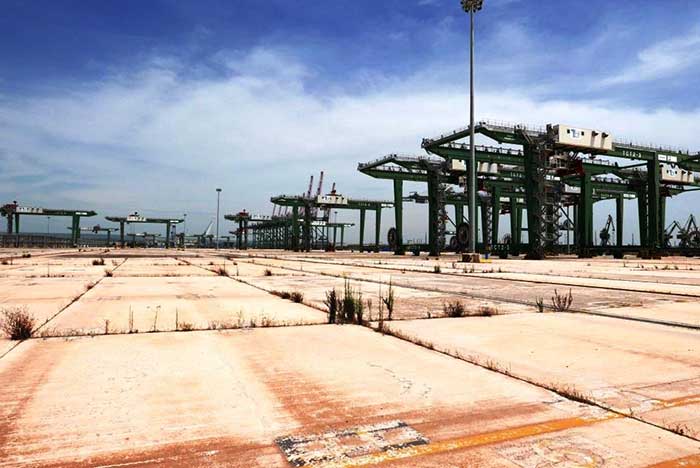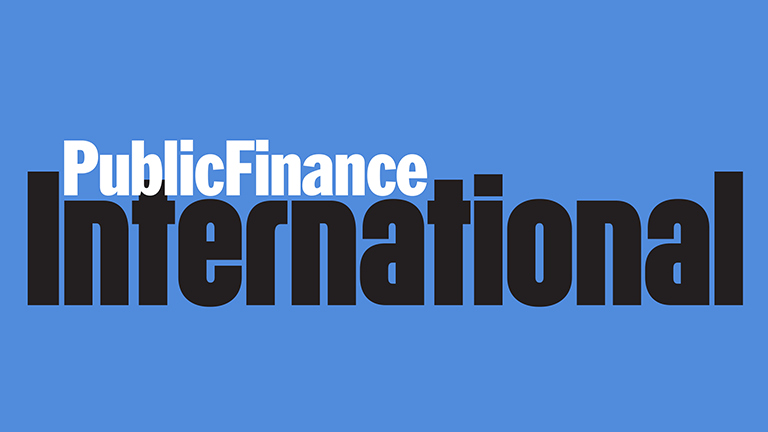web_taranto.jpg

The transshipment terminal in the Taranto port, Italy, worth €38m in EU investment, sits unused. Credit: European Court of Auditors
The ECA examined €1.4bn ($1.6bn) worth of investment in the EU’s maritime facilities, such as quays, docks and breakwaters between 2000-13. It found almost a third of this, worth €400m ($446m), was ineffective and unsustainable. The bloc’s total investment in such infrastructure during the period was €17bn ($18.9bn).
According to Oskar Herics, the member of the ECA responsible for the report, these investments are in “troubled waters”.
One euro in every three audited went on projects that duplicated existing facilities nearby, amounting to €194m ($216m). Out of that figure, €97m ($108m) was spent on infrastructure that is now underused or, in some cases, lies practically dormant.
Auditors also said that the EU-funded projects were inefficient: they were dogged by delays of up to 136% of the planned schedule, and cost overruns totalling €139m ($155m).
Herics explained that this was often due to the lack of a long term, EU-wide strategy, despite the fact that ports are a critical component of the EU economy and its trade network.
Where strategies were in place, Herics said they did not provide a coherent basis for planning and functioned poorly.
This was often due to weak implementation and coordination within the commission, and between the commission, member states and the European Investment Bank. The EIB delivered €10.1bn of the total investments.
For example, the EIB invested €240m ($268m) with EU guarantees for a port outside the bloc on the north coast of Morocco. This was a direct competitor to the Spanish port Algeciras, which had also received a total of €377m ($421m) from the EU budget and the EIB.
Subsequently, the EU port, Algeciras, lost a significant portion of the volume of traffic it handled previously.
Delays and cost overruns were often down to administrative blockages, such as issues obtaining licenses. But these, and excess capacity issues, could also be attributed to the fact that member states were more focused on “absorbing EU funding” than on the “impact of the invested money”, according to Herics.
The commission relies on member states’ port authorities to voluntarily provide reliable data on measurements like capacity. But intense competition between the ports means authorities are reluctant to share sensitive information, PF International understands.
But where the commission did have direct management of EU-funded projects, results were not much better. In fact, Herics said, in such cases EU financing was tied to outputs, rather than outcomes.
This meant that despite the fact that some EU-funded investments were not actually in use, their costs were still eligible for EU funding.
In one case in Sweden, the EU paid €17.1m ($19.1m) to modernise rail tracks near a port but there was “no improvement, no results, and no increasing of the traffic as was intended”.
In many cases, the auditors found there to be “missing or inadequate links” from the ports to nearby roads and railways, meaning more public funding will be needed in order for initial investments to work properly.
The commission also failed to undertake the necessary state aid and customs procedures, needed to ensure public investments in port facilities did not distort markets, preventing ports from competing on a level playing field.
Auditors advised the commission to follow up on state aid decisions, and update assessments based on forecasts when actual data became available.
They recommended setting out an EU-wide development plan with a revised number of core ports, and suggested better information sharing between the commission and the EIB. They also advised that investments in core facilities be prioritised only where added value is clear and private investment is sufficient.
EU officials told PF International that the commission will take note of the ECA report, and study it carefully. While the commission is said to agree that the efficiency of port infrastructure needs to be assessed from a long term perspective, officials also pointed out that the financial crisis has led to decreased demand and therefore unused capacity.
The commission agrees with the overall view of the report on the need for efficient maritime investments, and has taken a number of steps towards this already, officials added. These include: giving priority to investments in projects that already have adequate rail and road connections, rather than prioritising capacity; new regulation proposals to guarantee better financial transparency and use of capacity at seaports; and clarification of the applicable state aid rules.
Many of the funding recommendations made by the ECA in the report have infact already been put in place for the 2014-20 period, officials said.













